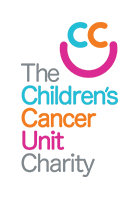Surviving Childhood Cancer
04 Jun 2014
In the swinging 60’s, all children diagnosed with Acute Lymphoblastic Leukaemia (ALL) died of their disease. ALL was then and still remains the most common type of childhood cancer. There was little or no cure and parents were sent home with a sympathetic pat on the back as the doctor shook their heads in dismay. In the early 80’s, a parent, whose child died of T-cell leukaemia with whom I recently spoke, was told by her child’s consultant, ‘we still do not really understand this disease. More often than not we do not know what we are doing’.
In 2014, up to 92% of these children not only survive common ALL, but can survive to live a normal life.
In the last decade, the 5 year survival for all children treated for childhood cancer (all types) has risen from 79 to 82%. 4 out of 5 children will survive, but 1 out of 5 will not. It remains the objective of this, as it is of every childhood cancer charity, to help bring survival figures to 100% and relapse figures to zero.
Over the past 30 – 40 years Paediatric Oncology has been regarded as the paradigm of how to run clinical trials cancer. Because of the rarity of childhood cancer, the amalgamation of all centres in the UK and Ireland into large research groups was essentially forced upon us. The United Kingdom Children’s Cancer Study Group (UKCCSG) was formed in 1997 and up until recently this group was instrumental in the setting up, running and reporting of childhood cancer trials. It is as a result of these trials that we can now stand by and be proud of the 82% 5 year survival. The UKCCSG has been rebranded and renamed as the Children’s Cancer & Leukaemia Group (CCLG) and although the group itself is not as active in trial activity as before, it still plays an extremely important role in the field of Childhood cancer.
The difference between Paediatric and Adult oncology is that in the former, doctors and nurses deal with an age range (generally 0 -16 years) and manage all tumours found in the range, whereas in the latter, doctors and nurses tend to manage specific cancer types (e.g Breast , Lung or Colon cancer). Children do not usually get adult cancers. Childhood cancers are a very heterogeneous group with childhood acute lymphoblastic leukaemia being far and away the most common disease, followed closely behind by brain tumours, lymphomas and then the rarer entities such as Wilms tumour, Neuroblastoma, Bone tumours, Retinoblastoma and Liver tumours. As mentioned above, the survival rate for ALL is excellent but we are not yet at 100%. The survival rate for some other tumours has remained static for the past 20 years (Osteosarcoma) and still remains dismal for some incurable cancers (Brain stem gliomas).
The work of the CCLG and other related cancer charities, such as this, will continue until not only can we boast of a 100% survival for all childhood cancers, but also a survival that is free from any long-term effects of the anti-cancer therapy.
This website’s consultant blog will address, every 3 months, some of the common themes that we face as Paediatric Cancer Paediatricians and some of the questions asked by parents on a regular basis.
